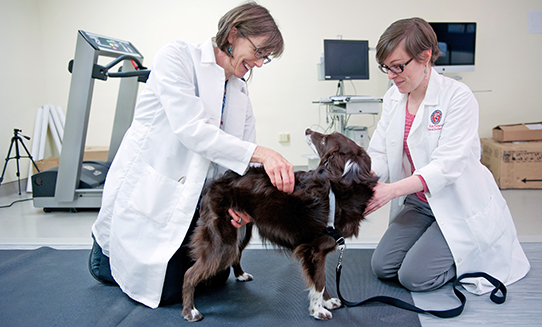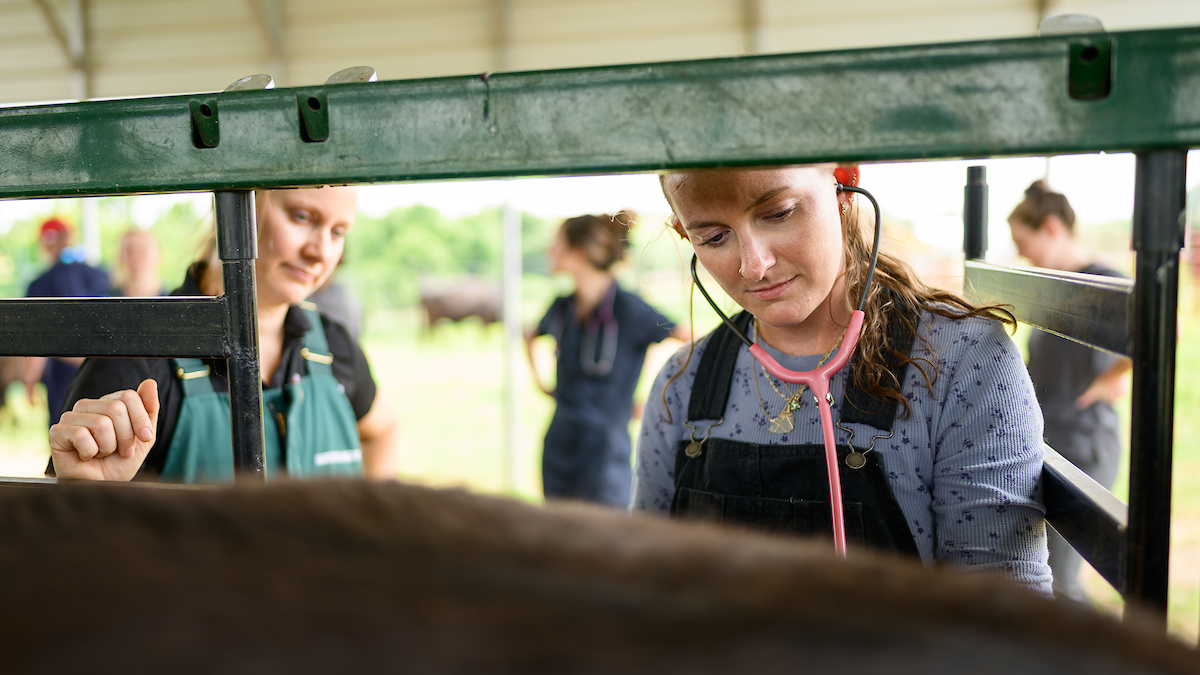Neurology Study May Lead to Better Outcomes for Paraplegic Dogs

A clinical trial from North Carolina State University involving paraplegic dogs has demonstrated that a one-size-fits-all approach is not ideal for treating spinal cord injuries. Instead, the study highlights the fact that the population of canine paraplegics – even those with the same type of injury – are very diverse, and that courses of treatment should be equally so. These findings may lead the way to personalized treatments for spinal cord injuries, and hopefully better outcomes for canine and potentially human patients.
Natasha Olby, professor of neurology at NC State University, along with a team of postdoctoral students, conducted a clinical trial involving the drug 4-AP and a derivative of the drug called t-butyl, which was developed by co-author Daniel Smith and the Center for Paralysis Research at Purdue University. 4-AP has been tested on humans for spinal cord injury, and is currently in use as a treatment for multiple sclerosis. T-butyl, the derivative, has not been tested clinically on humans. Both drugs work by helping damaged nerves transmit signals.

Olby and her team recruited 19 paraplegic dogs for the trial. All of the dogs had suffered similar spinal cord injuries, and all of them had been injured long enough to rule out any hope of unaided recovery. All dogs were treated with a placebo and both drugs, each for a two-week block of time assigned randomly, to first determine whether the drugs were effective, and then see whether or not there was a difference in efficacy between the two medications. The testing was conducted in a blind trial.
They found that there was little difference in efficacy between the drugs themselves, as both produced a significant improvement in stepping when compared to placebo. However, the difference in levels of response from the dogs in the trial ranged from no improvement to being able to take unassisted steps on a treadmill.
“The question quickly went from ‘Do the drugs work?’ to ‘Why aren’t they having similar effects across the board?’” Olby says. “And there are many possible factors to consider – some of the dogs may not have any axons left for the drug to act on, or it may depend upon how long they’ve been paralyzed or even whether or not they have a genetic predisposition to respond to this treatment.”
While Olby is pleased with the progress of the dogs who showed improvement during the trial, she is now focused on determining how best to identify patient populations that will respond best to the treatment. “There is no doubt that either or both of these medications can have an amazing effect on the right patient – but now we have to do the work of finding out what conditions make a patient the right one. If we can do that, we may save both patients and owners a lot of unnecessary frustration.”
Olby’s findings appear online in the open-source journal PLOS One. Other contributors to the work include veterinary postdoctoral students Ji-Hey Lim and Audrey Muguet-Chanoit, as well as Eric Laber, NC State assistant professor of statistics.


